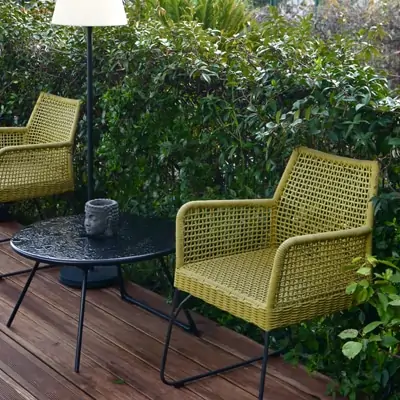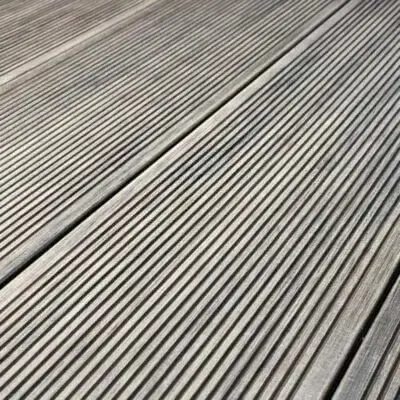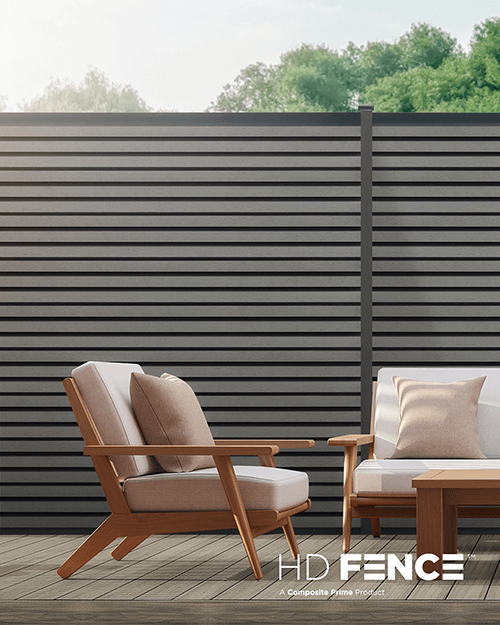Advantages of capped composite decking
Capped composite decking boards are currently the top choice among deck builders for their ability to mimic the look of wood, while being relatively low-maintenance. Capped composite deck boards consist of a composite wood or plastic core with a protective shell made up of plastic polymers. While they tend to skew towards the higher end of the price range, capped boards provide a number of advantages over traditional wooden boards or cheaper composite alternatives.
Chief among the benefits of capped boards is the fact that the durable polymer coating prevents mould and mildew from developing and provides an attractive, slip-resistant decking solution.
As with all building solutions, however, there is a range of options varying in quality and price and the benefits will increase higher up the price ladder. Good capped composite boards should have a thick, hard shell that makes them resistant to wear and tear and means that the deck can withstand heavy duty use. Premium decking boards come with a 25-year warranty against warping, cracking and staining though scratches are inevitable with any decking boards.

A natural-looking solution for outdoor spaces
All composite decking boards are designed to mimic the look of natural wood in a low-maintenance, slip-resistant deck, but their appearance will vary depending on the price. Affordable boards will typically be monochrome and feature an embossed wood grain. In the middle of the spectrum, boards may feature two or three different colours, creating a more natural-looking board that closely mimics wood. Premium boards will have more sophisticated patterns using multiple colours. Ultimately, all three levels should provide the high degree of durability characteristic of WPC decking.
The low-maintenance, slip-resistance decking option
Unlike wood, capped composite boards should not crack or rot. They also won’t fall victim to insects, and never need refinishing, sanding, or staining. A non-slip, alternative decking option, capped composite decking is fairly simple to clean as well. The exterior coating means that spillages, including tough stains like wine or grease, can be wiped off simply with warm soapy water and a brush – preferably one with soft bristles to avoid scratching. Unlike timber, composite deck boards are stain-resistant.
Fitting capped composite decking is also somewhat simpler than other alternatives. Many manufacturers including Trex and Millboard provide installation tools and instructions, making DIY installation a viable option.
Besides the standard 25-year warranty, capped wood-plastic composite boards today come with a cover to protect against everyday wear and tear. The capping also contains ultraviolet inhibitors, helping the boards against fading over time due to sun damage. And while some scratches are inevitable with use over time, capped composite boards provide the highest level of protection against everyday wear.
Ultimately, these boards are designed to provide maximum durability without trading in style and design. The best way to make sure your deck lasts for years to come is to check the warranty and follow the manufacturer’s instructions for installation and care.
Ensuring your deck’s durability and extending its life

In order to ensure the longest possible lifespan for your composite deck, some planning during the install phase is essential. While composite wood decking boards are inherently mould and mildew resistant, their durability is also helped by optimal spacing, allowing for water and airflow. Installing decking directly above soil is not recommended, but in such cases, the soil below should be graded beforehand in order to ensure that water will not collect underneath. Drainpipes should also be directed away from the boards, to ensure the most long-lasting and slip-resistant installation.
Ultimately, the choice between capped or uncapped boards will also depend on personal preference –uncapped decking typically comes in a wider variety of modern colours and finishes, while capped boards tend to more realistically mimic natural wood grain. Additionally, uncapped WPC decking provides a bit more choice after purchase. Because the boards are reversible, one pack will provide two colour options. While capped boards may be more costly initially, their cost will be offset by their durability. With some basic preparation and adequate long-term care, your composite decking will serve you for decades to come.













